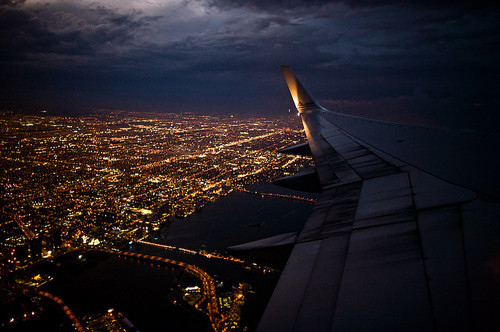There’s a lot of
potential on a bus.
Choosing to sit
alone when you first board the shuttle bus that takes those accredited can be a
little scary. At first, you’re sitting, still kind of asleep, half-hoping that
no one will sit next to you because really, the best thing would be to get to
shut your eyes and ride out the bumper-to-bumper traffic in a dreamy haze.
But then,
opportunities would fall to the wayside.
On the morning of
December 10th, a lovely woman named Verona sat next to me. She works
with UN Women, located in New York. The 10th was the day after
Gender Day at the COP, so sitting next to her and getting to talk to her was a
wonderful opportunity in and of itself. However, as we inched closer and closer
to the bus during our stop-and-sometimes-go bus ride, she turned to me and
asked, “what will you do when you get there this morning?”
Thinking about it
for a moment, I said, “probably try to get into the overflow room so we can
watch the Presidential Plenary.”
The Plenary, for
those that don’t know, is a general “opening ceremonies” that is held at the
COP every morning. The President of the COP always hosts it, and different
guests and officials speak every day. At the Presidential Plenary, the president
of Peru, Chile, and Columbia would be speaking. Because of this, it was
considered a high-level event, and the only way to get in to the actual room
would be with a ticket. However, with our ‘observer pass’ status, none of us
could get tickets the day we had tried.
But Verona smiled
at me. “I’ve got an extra ticket, if you’d like to go.” She paused, considering
the time. “We’ll probably arrive just in time.”
Sure enough, with
a bit of hurrying through security, we were just in time for the Plenary to
begin.
 |
| The President of Peru as he addresses the Plenary. |
The first to
speak, after being properly introduced by the COP 20 President, was Ollanta
Humala, the president of Peru. He touched on some of the many actions being
taken here in Peru to fight climate change now. For example, he announced
proudly that Peru would be donating $6 million dollars to the Green Climate
Fund this was an announcement that was met with an uproarious applause from the
audience. After passing the $10 billion mark already in the Green Climate Fund,
the fact that we are surpassing that check point is beyond inspirational.
After him,
president of Chile, Michelle Bachelet, spoke. Chile has commited to reducing
their emissions by 20% by 2020 (based off of 2007 emissions). They have also
enacted a National Adaptation Plan, which not only includes 100+ actions to
improve sustainability in their country, but also builds new avenues for
generating information about environmental studies.
The third
president to speak was the president of Columbia, Juan Manuel Santos. One of
the biggest actions currently happening in Columbia is that they have committed
to a zero net deforestation rate by 2020. Considering that most of the
deforestation that currently happens in Columbia is illegal, this is an
extremely complex issue beyond simply stopping deforestation. He also made a
remark about how he was going to announce Columbia’s commitment of $4 million
to the Green Climate Fund… but since Peru had already set the bar, he decided
right then to up the ante to match the $6 million that Peru would be donating.
Once again, the
crowd went wild.
Following the presidents,
the ever-inspirational Secretary-General of the United Nations Ban Ki-Moon took
the floor. If you ever have the chance to hear this man speak, you must. He,
and the three presidents, all had very inspirational and moving speeches – all four
of these high-level officials saying many of the same thing about COP 20 and
about where we must go if we hope to save our planet; if we hope to save lives.
 |
| United Nations Secretary-General Ban Ki-Moon as he addresses the Plenary. |
All of these
officials proclaimed that the negotiations (ending today) must have strong,
decisive language that outlines clear goals. These goals must be legally-binding, and must align not just every nation, but everyone. It must
align academia, the private sector, governments, working class and the rural
poor; it must work towards every single
person’s best interest, and it must work to save lives. It must set a solid
foundation of a signed draft, so
when COP 21 in Paris, France comes along, we will have something that is legally-binding, something that will make countries lower their greenhouse
gas emissions, invest in the low-carbon economy, promote green innovation, and
improve public health.
This legally-binding negotiation must
create a world-wide alliance, the biggest in all of human history. Every single person can be brought
together in our fight against the common enemy: climate change. This is imperative.
These three
presidents and Mr. Secretary-General made it very clear. We must commit to action. We know one thing; time is not
on our side. We cannot afford to put off a decision like this farther than
Paris; in fact, all of them made it very clear that it is up to us—the people—to
take action now. To urge our countries to act globally, to change the way we live
in order to do what we can.
Think about it. It
may seem like as individuals, we are powerless – but climate change is directly
affecting individuals. Which is why every
single individual action against climate change, from now to 2015 and
beyond, is important.






